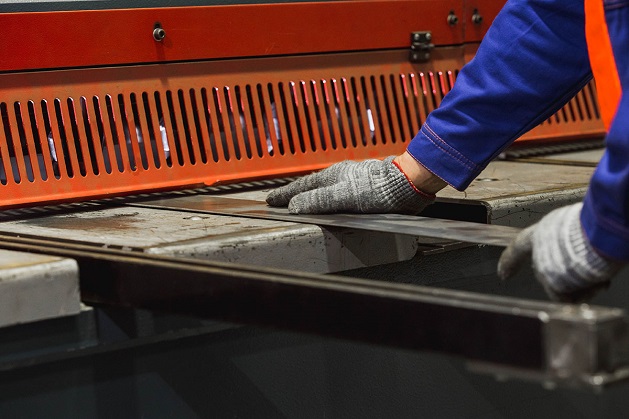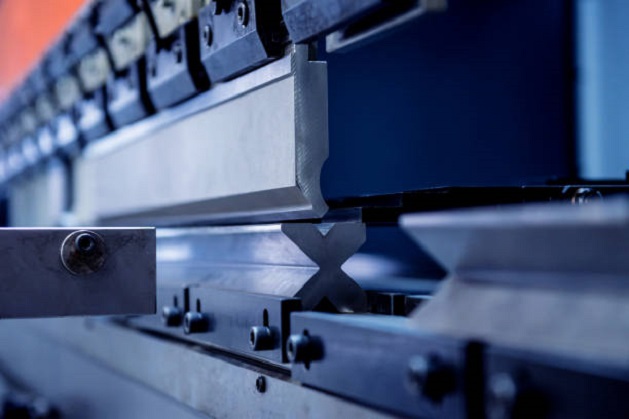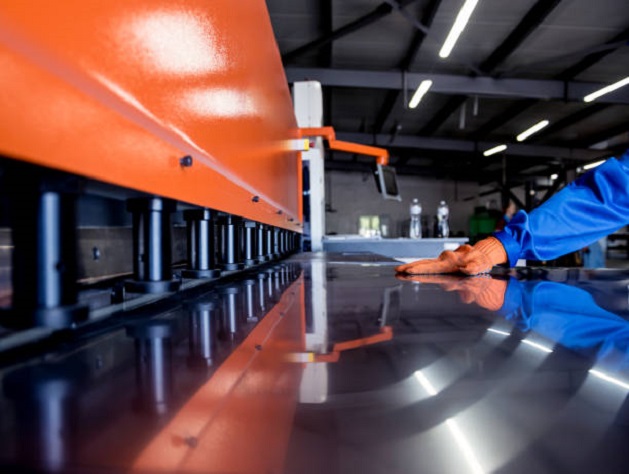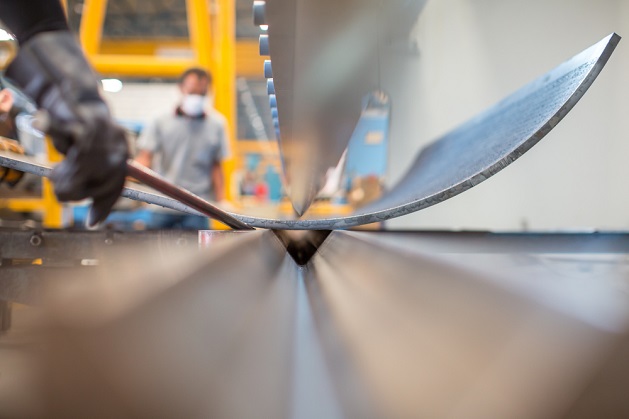From the crafting of one-off aluminium auto body panels, to the mass production of steel computer covers and chassis, cutting sheet metal is the most crucial procedure in the entire metal fabrication process. It’s the first operation in most manufacturing plans, and regardless of whether it’s performed with small benchtop shears or a CNC-controlled guillotine, it’s also the stage where fabrication businesses are under the most pressure to prove their viability.
Raw materials are costly, which is why it’s so important for the shearing machinery being used in cutting operations to be capable of performing maximum cutting action, but with minimal waste or distortion. And this is especially true when working with expensive alloys and metal substrates with long lead times, where even a single instance of a substrate becoming twisted or deformed while cutting can result in an entire manufacturing facility shutting down indefinitely.

Understanding Why Guillotines are the Best at Cutting Sheet Metal
Make no mistake: not only are modern guillotine sheet metal shears some of the heaviest-duty machines you’re likely to find in metalworking businesses, but they’re also some of the most accurate, and technologically advanced pieces of equipment of any kind used by large-scale fabrication shops and heavy manufacturers. They have to be because every operation that comes after the metal’s been cut is dependent on their ability to maintain millimetre shearing tolerances thousands of times a day.
It’s important to remember that while shearing is a process that involves cutting metal, there’s a difference between using a sheet metal guillotine for shearing, and other cutting methods. Guillotines utilize two sets of blades – a pivoting upper and a fixed lower – to cut metal substrates, while ordinary cutting methods rely on a single blade to saw, slice, or rotates their way through the metal.
The difference this makes, however, is significant. A sheet metal guillotine machine for shearing has a wide scale of cutting advantages, including:
· Straighter cuts. With the solid backstops located on shear cutters, there’s less of an opportunity for the working substrate to move or shift, allowing for cuts that are precise and can be used to achieve tight tolerances.
· Cleaner cuts. The hardened stainless steel blades used on modern sheet metal guillotines for sale allow for a smoother-edged cut than any other type of cutting process, including laser.
· Less waste. The cleaner, straighter cutting action of a guillotine shear means less raw material is lost to waste, fall-off, or rework, giving businesses better control over their raw material costs.
· Higher throughput. With continuous feeding, the cyclical action of guillotine shears makes it possible to move thousands of sheets of a substrate through a machine at higher rates than with any other type of cutter.
· Lower cost. When compared with rotary die, saw-type, or especially laser cutters, guillotine shears cost significantly less to purchase and maintain, thereby lowering both their capital investment, and per-piece/per-stroke production costs.
And because raw substrates don’t have to be heated before they’re cut, guillotine shears are ideal for almost any type of metal that’s not overly brittle, or whose hardness won’t allow it to be cut without breaking.

Workshop-Sized Guillotines Help Keep Costs Under Control
Manual and treadle-operated sheet metal guillotines are standard equipment for most small metal fabricators, including tradies and DIY metal workers. For modest-sized, modest-volume substrates, these compact shears are ideal for working with tight-tolerance fabrication pieces that are easy to handle, and can be quickly shaped or formed on a press or bending machine afterwards.
As opposed to the larger type of sheet metal guillotine Australia has to offer, these conveniently-sized, non-automated shears pack their own unique core of benefits, including:
· Smaller working lengths. With comfortable shear capacities between 200mm and 1270mm, these smaller guillotines make it easy to work with smaller length substrates that can be processed at lesser angles.
· Smaller footprints. Manual shears can be mounted to any workbench or table, and even the largest treadle shears don’t require more than 1600mm of floor space to make an excellent addition to any workshop.
· Minimal physical demands. Even with maximum cutting thicknesses up to 1.6mm, these small but powerful shears don’t require excessive effort to achieve their maximum cutting force.
Manual and treadle-operated sheet metal guillotines make it easy for specialized fabricators to perform a full range of intricate, high-precision cutting operations without experiencing costly material losses, utility expenses, or the need to rely on destructive grinders or torches to achieve straight lines. They perform incredibly for their size; however, when it comes to industrial-sized fabrication works, there’s no substitute for what a powered sheet metal guillotine machine is capable of.

Industrial-Level Fabrication Demands Fully Automated Guillotines
Whether it’s for standardized manufacturing and construction, or prototype works for the mining and petrochemical sectors, industrial-scale metal fabrication demands the use of full-sized guillotine shears to get the job done. And with shear capacities extending to 4000mm and cutting thicknesses up to 6.5mm, these heavy-duty guillotines can come equipped with up to 2 pivoting cutting blades and 4 fixed lower blades for the unparalleled cutting action.
This increase in the number of blades increases the longevity of all the blades as a whole, further aiding their ability to repeatedly process large volumes of metal stock almost effortlessly. In fact, full-sized guillotines are only limited by the choice of their prime power, which can include:
· Pneumatic power;
· Hydraulic power; and,
· Electro-hydraulic power.
Because of their higher compressive power, hydraulic-powered units tend to be the preference among industrial-scale guillotines, but as with any powered guillotine for metal sheet shearing, an advanced range of high-end cutting features are typically available across the board, including:
· Programmable CNC automation;
· Rear laser and light guard safety sensors; and,
· Variable stroke controls and stroke counters.
Hydraulic variable rake guillotines elevate the versatility of industrial shears even further by allowing machine operators to increase or decrease the rake angle of the pivoting upper blade. The result is an even better quality cut that dramatically reduces the potential for cutting defects, as well as raw material waste.

The Final Word
At the end of the day, metal fabricators are expected to satisfy both the time and quality requirements of production environments, while still ensuring maximum utilization and minimal waste of their raw materials. It’s not a difficult balance, but it’s one which, along with the prerequisite skills, invariably requires having the best possible fabricating machinery available for the job at hand.
With today’s modern guillotine sheet metal shears, fabricators not only have the ability to raise their production quality and volumes to higher levels, but to also control their material consumption better than ever. It’s the leverage that every business that fabricates needs to increase its viability.


